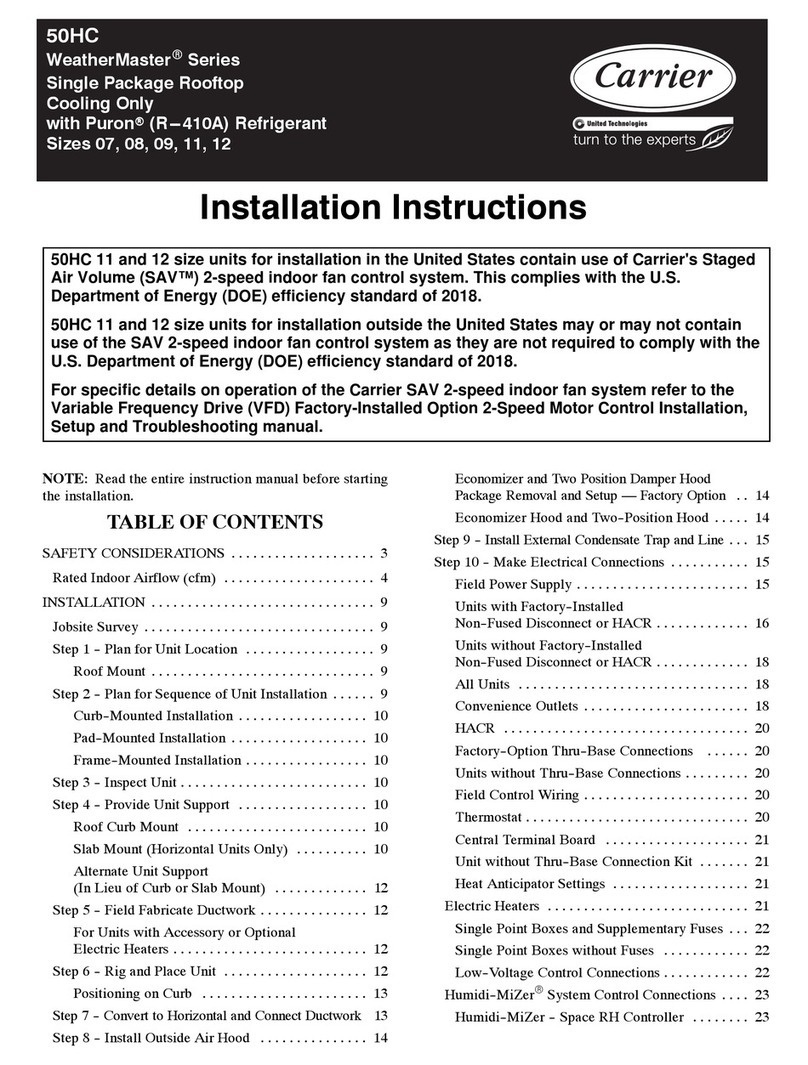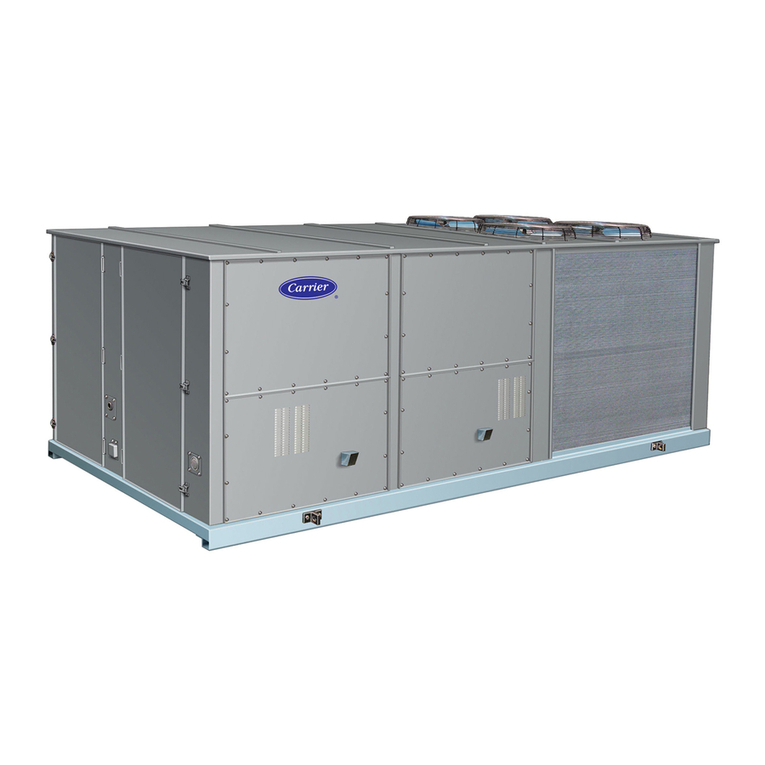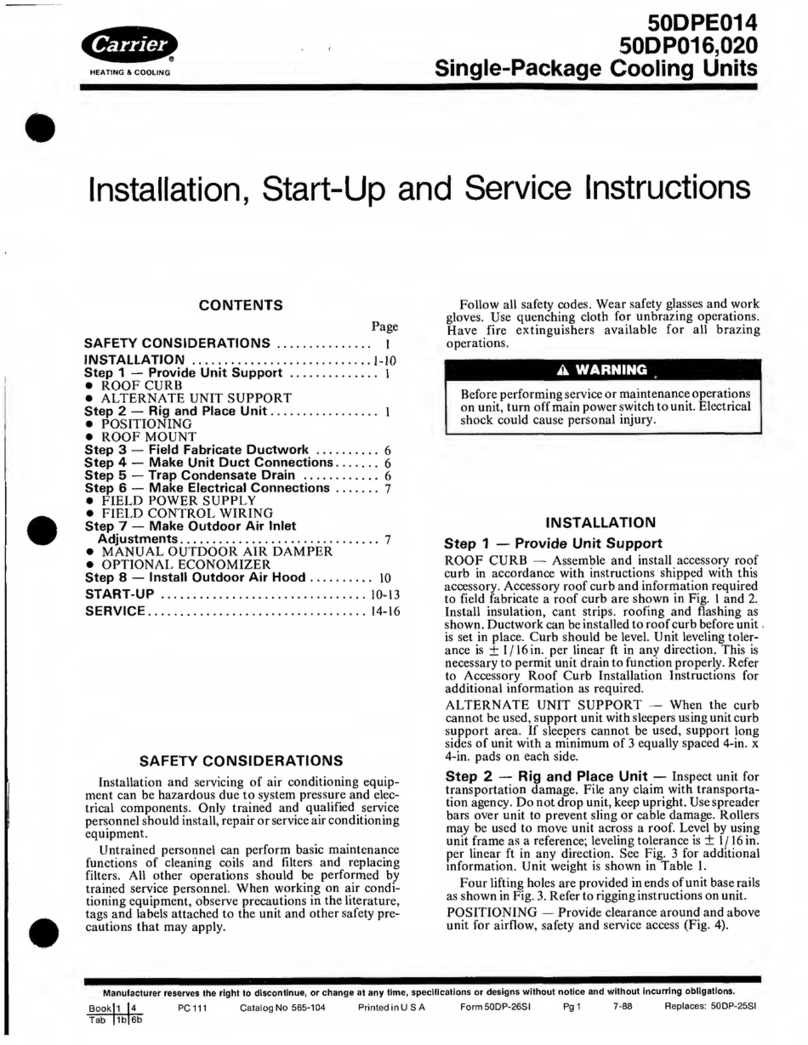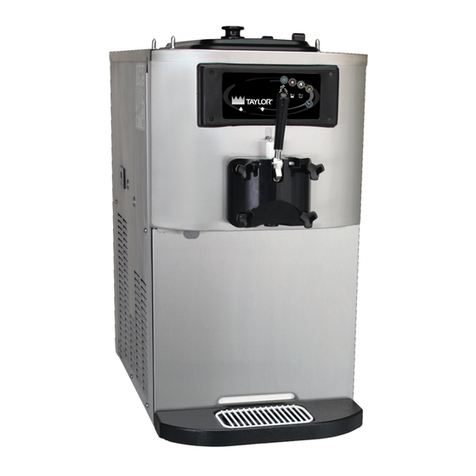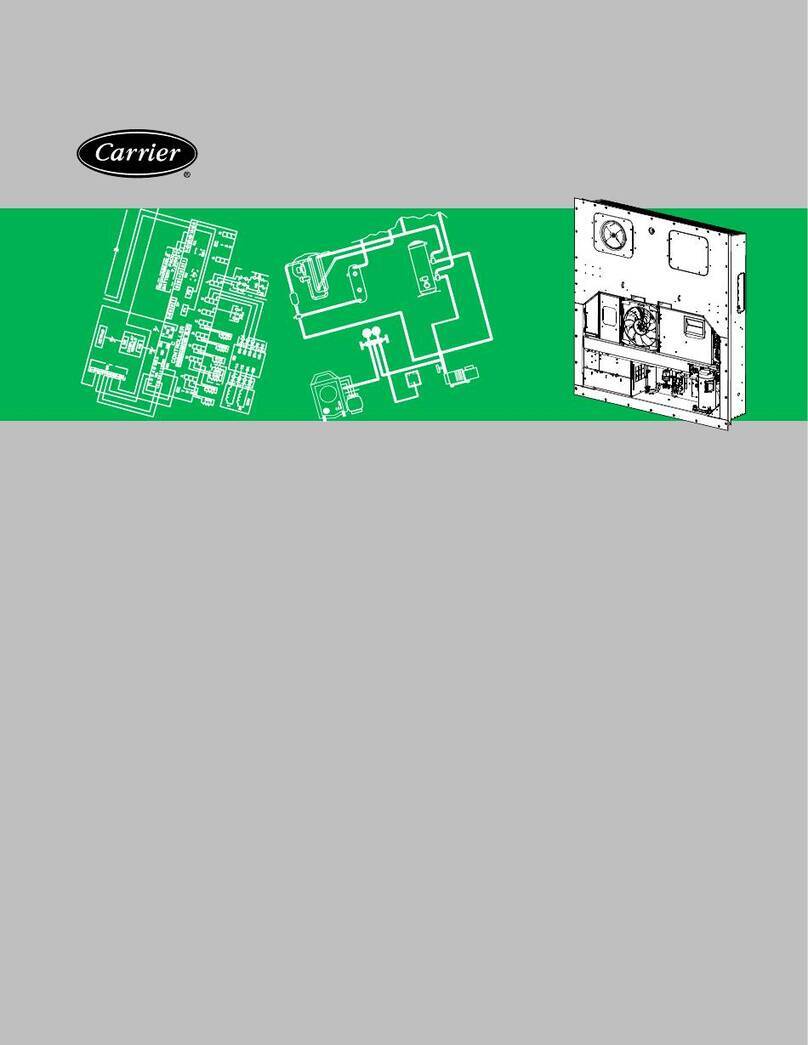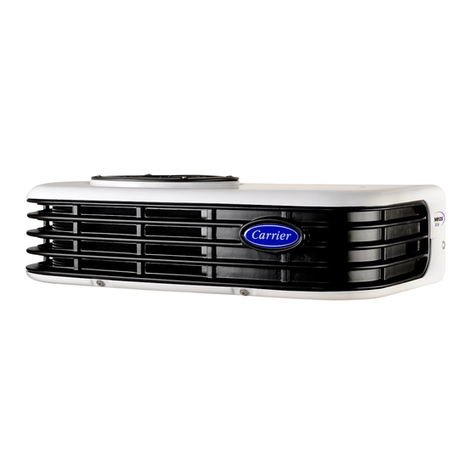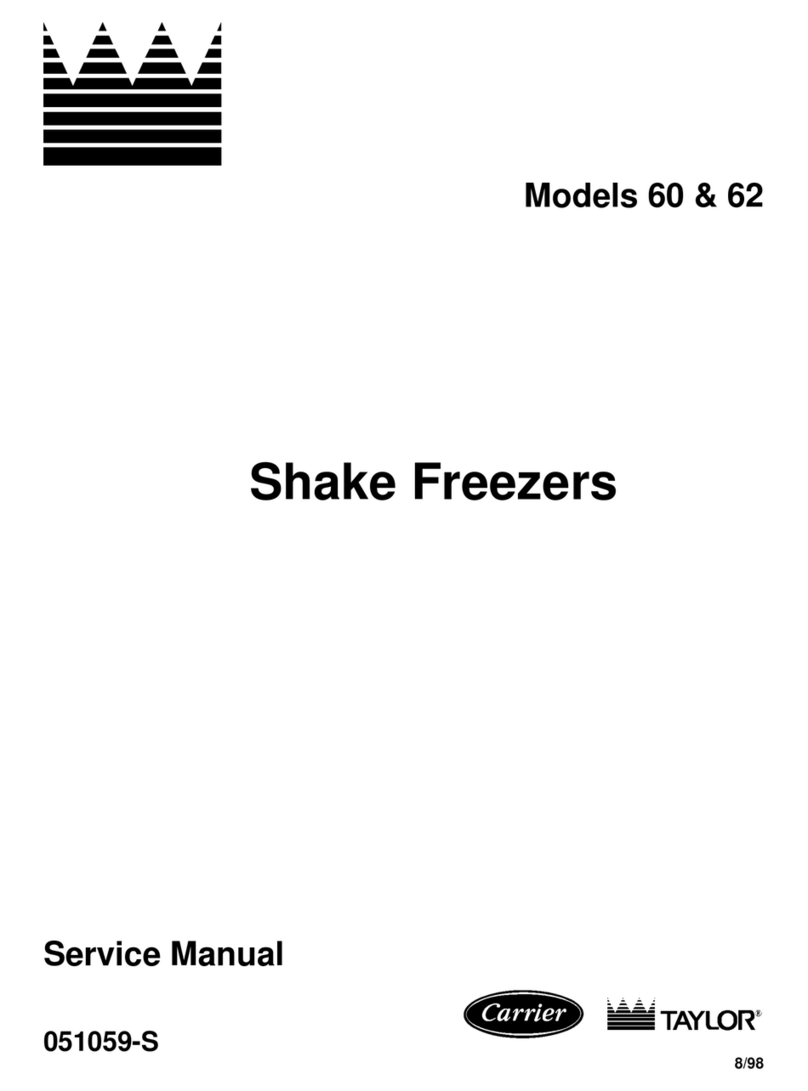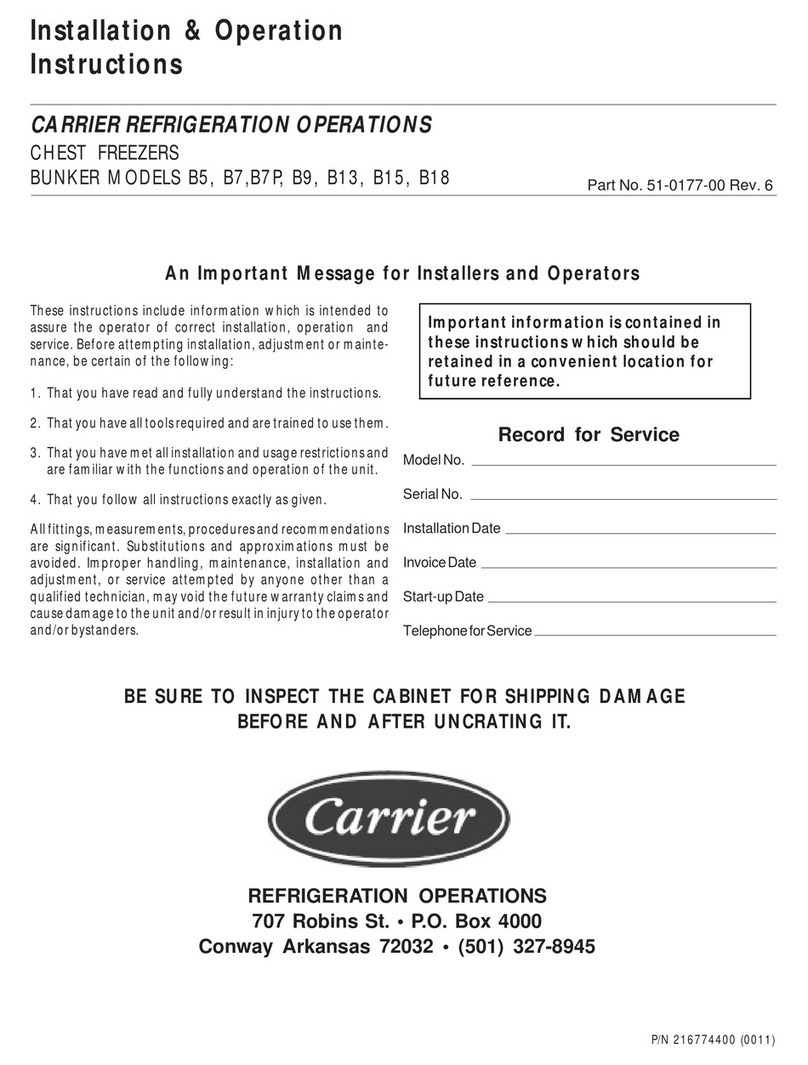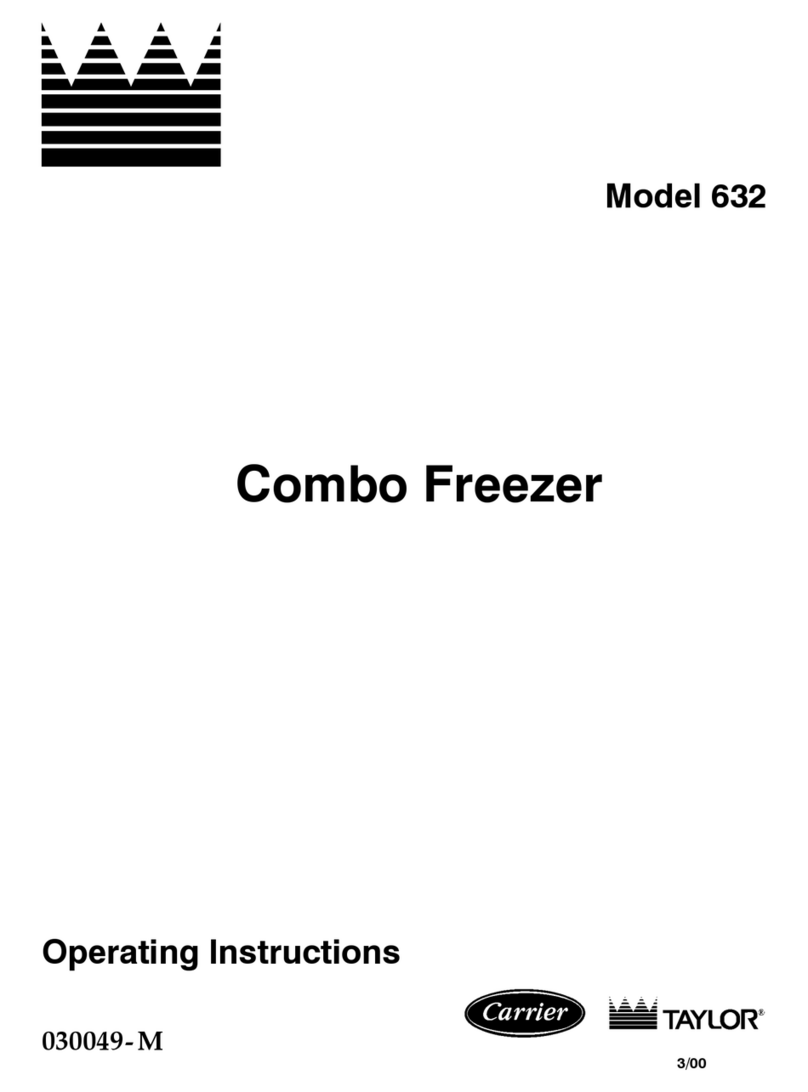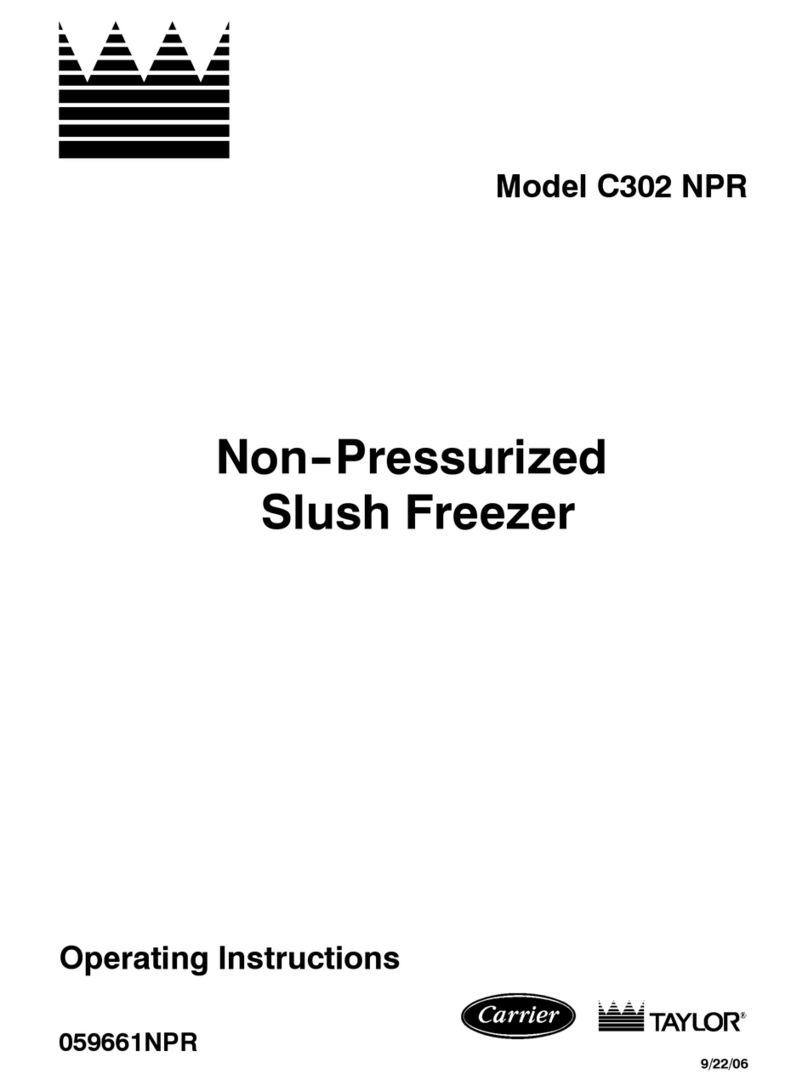Installation & Operation Instructions
These instructions include information which is intended
to assure the operator of correct installation, operation,
and service. Before attempting installation, adjustment
or maintenance, be certain of the following:
1.That you have read and fully understand the instruc-
tions.
2.That you have all the tools required and are trained to
use them.
3.That you have met all installation and usage restric-
tions and are familiar with the functions and operation
of the unit.
4.That you follow all instructions exactly as given.
All fittings, measurements, procedures and recommen-
dations are significant. Substitutions and approximation
must be avoided. Improper handling, maintenance,
installation and adjustment or service attempted by any-
one other than a qualified technician, may void the
future warranty claims and cause damage to the unit
and/or result in injury to the operator and/or bystanders.
Record for Service
Model No. __________________________________
Serial No.____________________________________
Installation Date ______________________________
Invoice Date__________________________________
Start-up Date ________________________________
Telephone for Service __________________________
INSTALLATION INSTRUCTIONS
Thermostat will maintain approximately zero degrees on
the original factory setting. Turn the adjusting screw
clockwise for colder and counterclockwise for warmer.
IMPORTANT: Turning control counterclockwise to the
stop shuts cabinet "OFF".
For storage of package ice cream, turn thermostat to
coldest position. Limit top layer of package to a height
consistent with cabinet usage and turn over of product.
LOCATION
Select a location for the cabinet which will be most con-
venient for the customer and which will allow adequate
air circulation.Restricted air flow will result in higher con-
densing pressures and operating costs.
Provide at least a 1-inch space around the exterior of
the cabinet. The outside shell is the condenser and
depends on the natural convection of room air for dissi-
pation of its heat. Stainless or formica facing sheets
applied to the cabinet exterior should be in tight contact
with the cabinet's outer walls to improve the heat flow.
When a cabinet is built into a counter or back-bar and
space is allowed between the counter and the cabinet
walls, provide holes or louvers along the top edge for hot
air to escape.Holes should be screened to keep insects
and rodents out.
IMPORTANT: Before building any piece of equipment
in, run it to be sure the operation is satisfactory.
BE SAFE. SEE ILLUSTRATION ABOVE.
When a cabinet is installed in a moving vehicle, use the
original crate mounting angles or equivalent to securely
bolt the cabinet to the vehicle floor so it won't move
going around corners or during sudden starts and stops.
INSTALLATION & OPERATION 3
Important information is contained in
these instructions which should be
retained in a convenient location for
future reference.
